Grab your favorite peppers and dehydrate them for your seasonings and spice blends! Preserve your harvest all year long!
No need to heat your kitchen when you use the amazing Brod & Taylor® Sahara Folding Dehydrator! Y’all I LOVE LOVE LOVE this thing! Seriously, it’s amazing! I’ve been using it for a couple of years now and it’s one of those things that you may not think you need it but, after one use, you’ll question how you ever went without one!
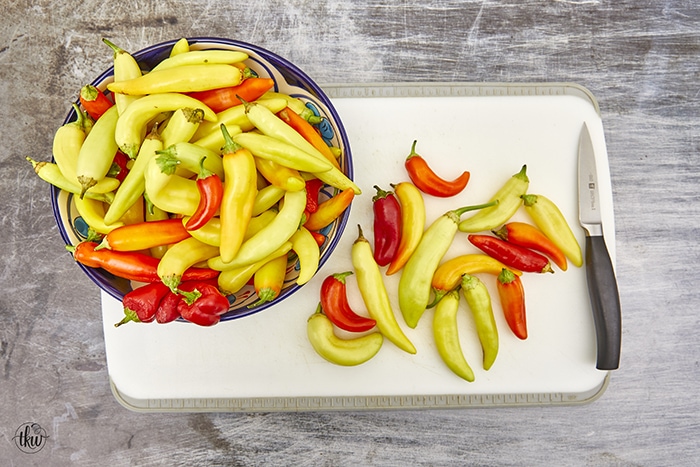
The Garden That Keeps on Giving
So if you follow me on social media, you’ve seen one of my various posts about my pepper plants taking on a life of their own. It’s to the point I’m growing mystery peppers that I never planted but somehow I now am the proud parent of these rogue plants. My banana peppers are well, from Satan himself. Y’all I’ve never in my life had a banana pepper this hot. I took my first bite of one and honest to goodness thought my ear was bleeding as it was that hot.
Then these Spicy Cajun mini bell pepper sprouted, mini orange, and red long peppers. Recently I’ve discovered rogue jalapenos and bell peppers. I have peppers that could last a year easily. It got to the point that I couldn’t give any more away. That’s when I decided to dehydrate them.
You’ve seen just how amazing dehydrated arugula turned out, so why not do the same with my pepper bounty?!
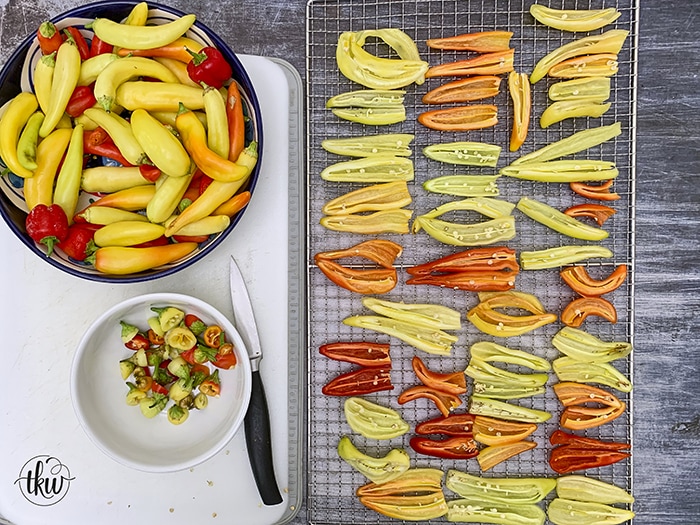
Equipment Needed
So you only need 3 items for this:
- Dehydrator – I love mine as it folds down pretty compact yet when it’s opened up, you can fit a lot in it!
- Sharp Knife
- Cutting board
Well okay, 4 if you want to add in containers to store it but really, that’s it.
One thing I do want to mention is if you have sensitive skin it’s recommended you handle peppers with gloved hands and do not rub your eyes/face/other body parts.
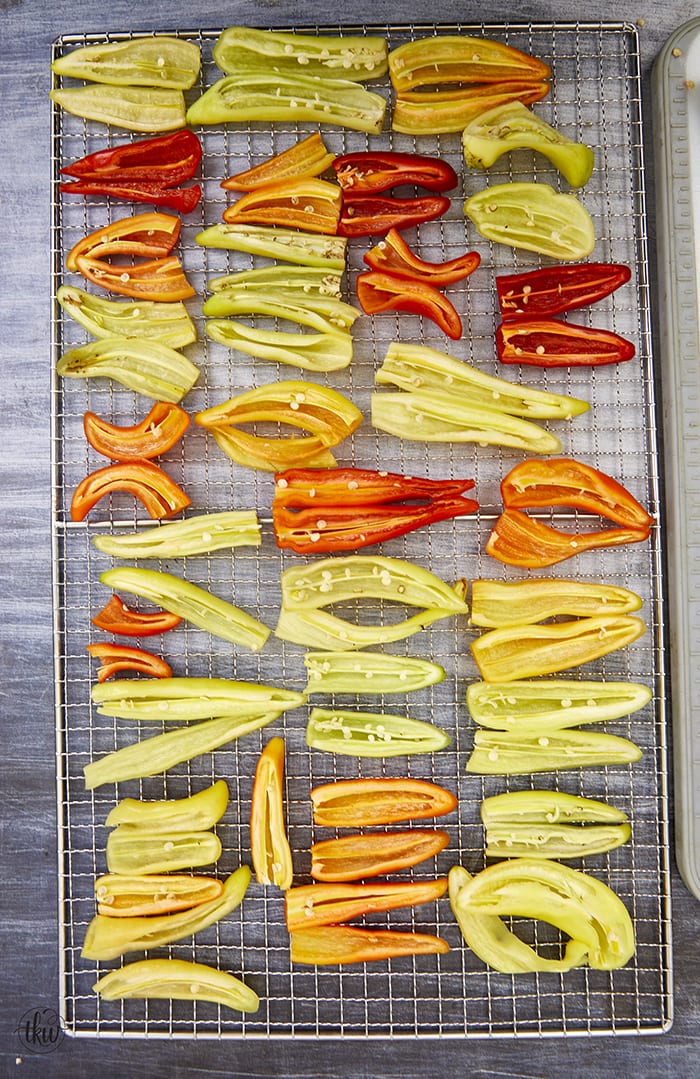
Seeds vs No Seeds
The biggest question folks will ask is if they should leave the seeds and membrane in the pepper when they dehydrate it or not.
The choice is purely yours. If you want it hotter, leave the seeds and membrane. If you do not, omit it. I did about a 50/50 mashup of mine as I kept half of the seeds to dry out for next years’ harvest.
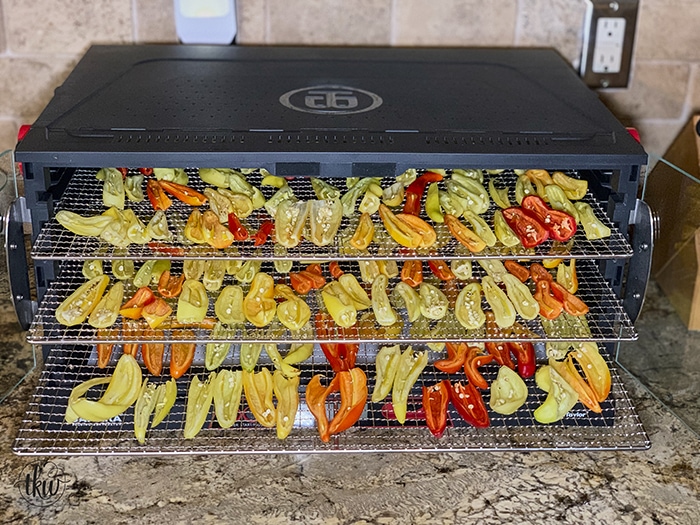
Dehydrating Times
Given the size of your pepper, the thickness of the skin, and how big the piece is, will determine how long it takes to dehydrate them. Larger peppers that have a higher water concentration will take longer. A good rule of thumb is to start at 6 hours at 145F. Larger bell or ancho peppers can take closer to 8-10 hours.
Once the peppers are all sliced, on the racks and the doors are shut, simply set the dehydrator to 6 hours at 145F. At the 5 hour mark, pause it and check the peppers by feeling them. If they are still soft and pliable they will need a few more hours to dehydrate.
The most important thing to remember here is they must dehydrate completely before you store them or attempt to process them into spices. If they are not fully dried you run the risk of them developing mold.
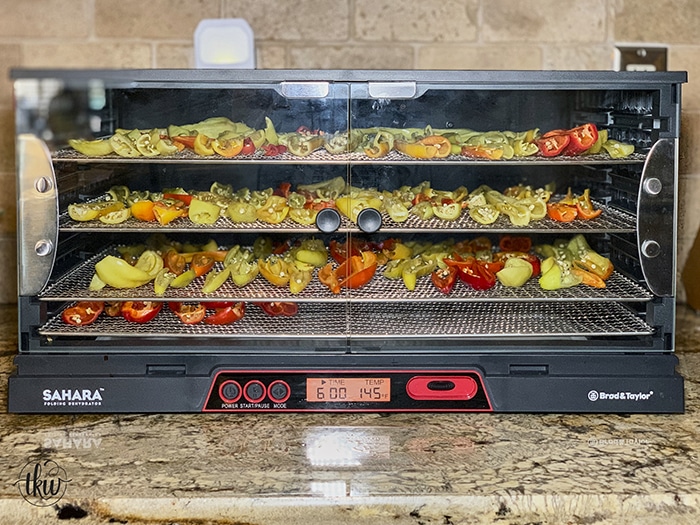
Just listen (and feel)
You’ll know when your peppers are fully dehydrated as they will feel brittle when you touch them. There will be no flex or bend.
They should ‘snap’ in half or apart when you attempt to bend them.
Some peppers may be done faster than others; that’s normally as just like humans, no two peppers are the same.
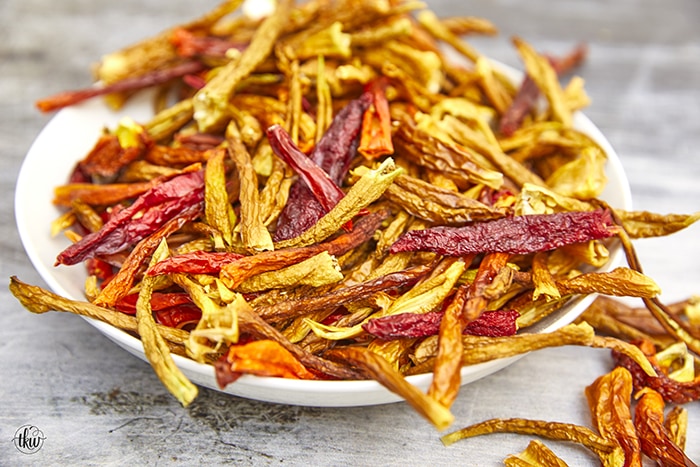
Dehydrator Q&A
- Does it get hot? – No. The unit doesn’t get hot nor does the surface it sits on
- Is it loud? – It has a quiet fan that runs the entire time the machine is operational but it’s not super loud. Like we could sit at the island where it was processing the apple chips and have a normal conversation. You will hear the fan but it’s not loud.
- How compact does it get? – About a third of the size. When fully set up, it’s 11″ high, when it’s completely folded down, it’s 3 3/4″ tall. The shelves and drip tray are stored in a separate, zippered container that is a little over an inch tall. I store mine on a shelf in my pantry
- Do I need any special other equipment with this? – For this specific recipe, no other than a cutting board and sharp knife. For apple chips, for example, I would say the ONLY thing else you would need is Mandoline to slice your fruits and veggies of an even thickness. If you can cut even slices consistently then you don’t need one.
- Does it use a lot of electricity?– The Sahara Dehydrator has 2 independent heating circuits of 375w each. The fan uses very little electricity. Per Brod & Taylor, “Typically the energy consumed over a full cycle of dehydration is less than 0.4 kWh/hr. Depending on where you are in the world in the US this is $0.04-0.05 USD per hour used. In Germany, it’s about € 0.12 per hour used. So for this recipe, you’re looking at $0.35-0.60 USD.
- How much does it cost? – It ranges from $425 to $495 depending on which shelves you purchase.
- Is it worth it? – ABSOLUTELY! It’s an investment y’all. Look at it this way – a bottle of dried spices is what $5-8 dollars? A bag of apple chips is maybe $5 per bag. Jerky is $15 for a large bag. Fruit leathers are $4 a box. That’s over $20 for 3 things that are gone in a day or two. Not to mention that you’re limited to one flavor or each. What if one person wants cinnamon apple chips and the other wants plain. And don’t forget the folks that only like a certain flavor of jerky. And those fruit leathers come in a bajillion flavors. You could easily spend $100 on a single shopping trip pleasing everyone… ONCE. If you did that a little over 4 times, you could have purchased this machine AND made countless batches of your stuff. Growing your peppers cost pennies on the dollar AND you can control what goes into growing them. You know that when you dehydrate your peppers that there are no mystery items in them.
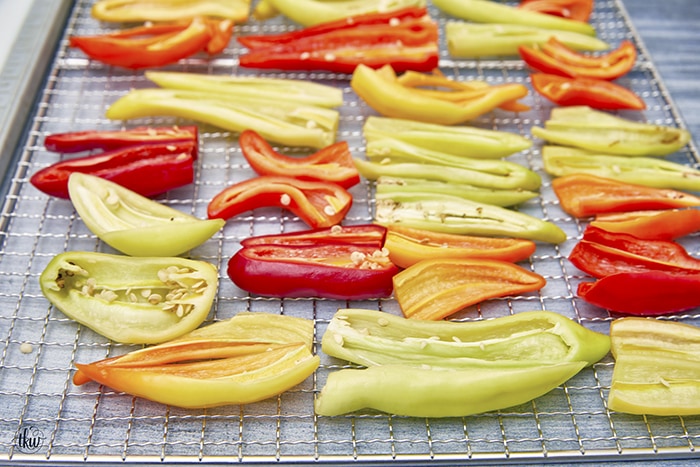
How to Store Dehydrated Peppers
Whether you grind/process them or not, it’s recommended you store the fully dehydrated peppers in air-tight containers in your pantry. I store mine in sealed mason jars both processed as a spice and left whole.
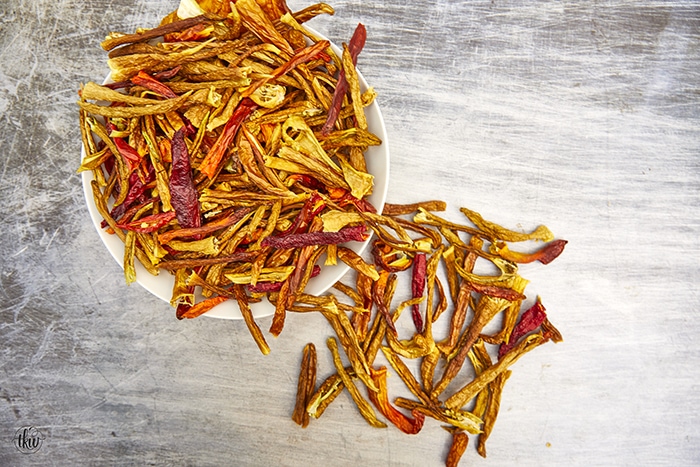
Dehydrating Pepper Varieties
I’ve yet to find a pepper that I haven’t been able to not dehydrate however I’ve not tried this on a reaper pepper. I do not need to eat one of those babies as frankly, I like having feelings in my mouth or shooting flames out of my body.
One concern I had before dehydrating a whole batch of atomic Satan banana peppers was whether or not it would ‘smell hot’ or burn our eyes in the kitchen. I can tell you that while it has a very faint pepper smell, there was no strong odor or hotness in the air. As someone that has asthma and is hypersensitive to smells, I’ve dehydrated super hot peppers a bunch of times with no issues.
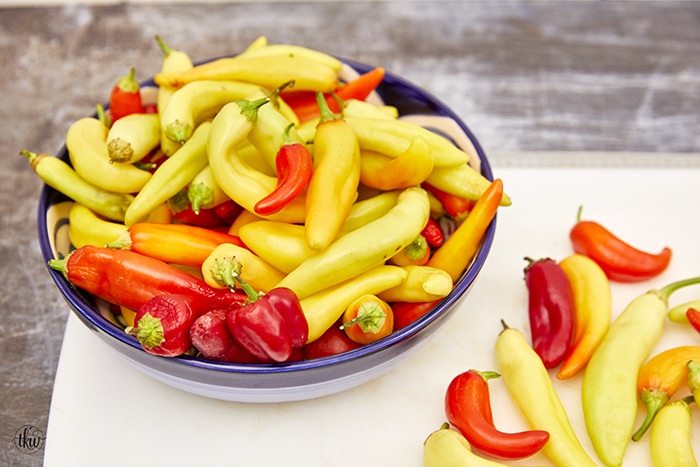
What to do with Dehydrated Peppers
Gosh, you can do so many things with them:
- Store in sealed mason jars for future dishes
- Grind into powders or flakes for DIY seasonings/spices
- Crush into dips, soups, stews, or your favorite dishes.
- Sprinkle on pizza just like you would red pepper flakes
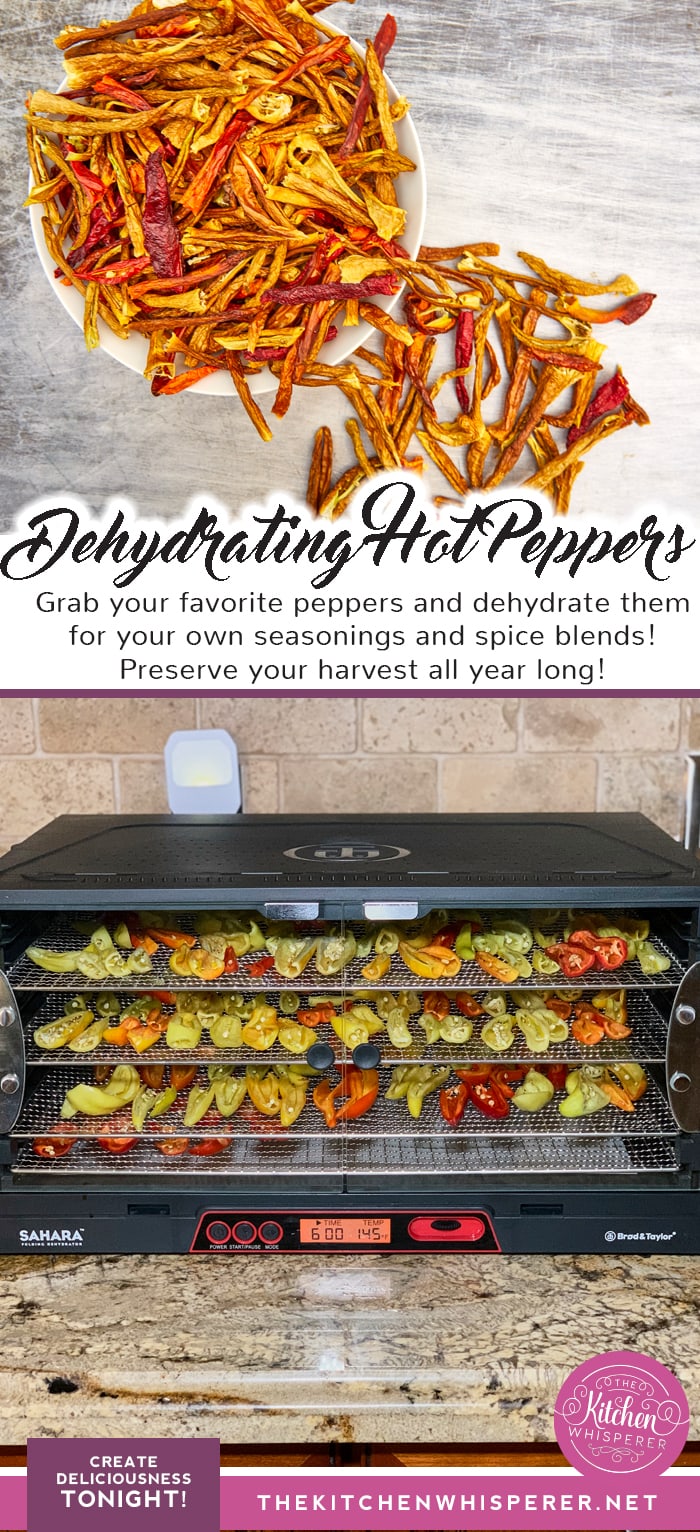
How to dehydrate peppers
Grab your favorite peppers and dehydrate them for your own seasonings and spice blends! Preserve your harvest all year long!
- Prep Time: 10 minutes
- Cook Time: 6-10 hours
- Total Time: 6+ hours
- Category: dehydrating, spices, food gifts
- Method: dehydrating
- Cuisine: dehydrating, spices, food gifts
Ingredients
1 pound fresh hot peppers, cleaned, sliced in half
Instructions
- Place the sliced peppers, cut side up on the dehydrator rack in a single layer.
- Once all of the racks are filled, close the dehydrator doors, set the time to 6 hours, and temp to 145F.
- Depending on the size of the peppers they may need anywhere from 1 hour to 4 hours more to dehydrate fully.
- Once dehydrated fully, process into desired texture or store whole in an air tight container.
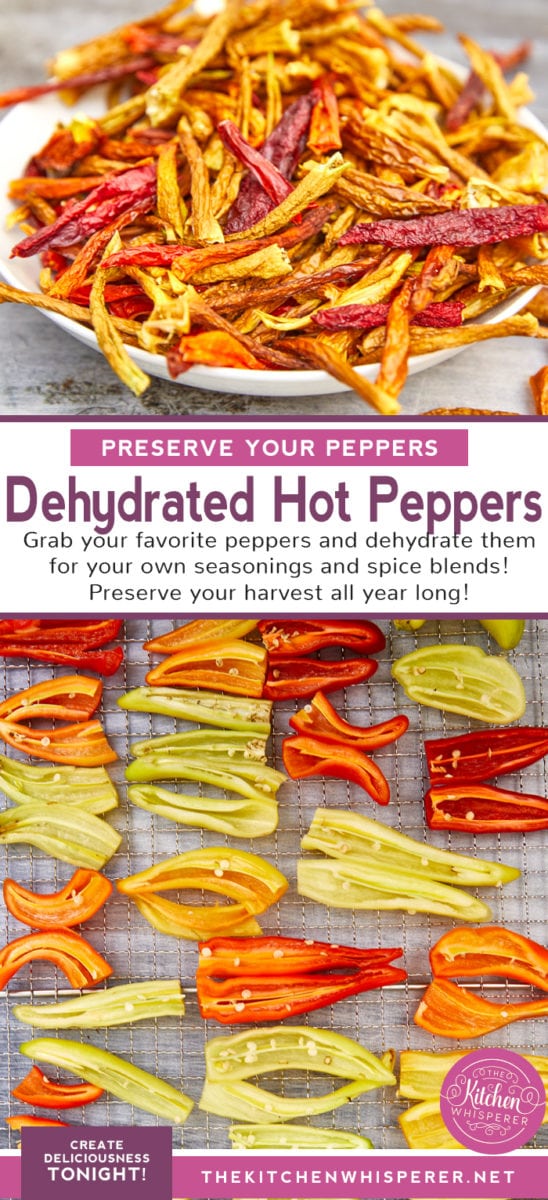
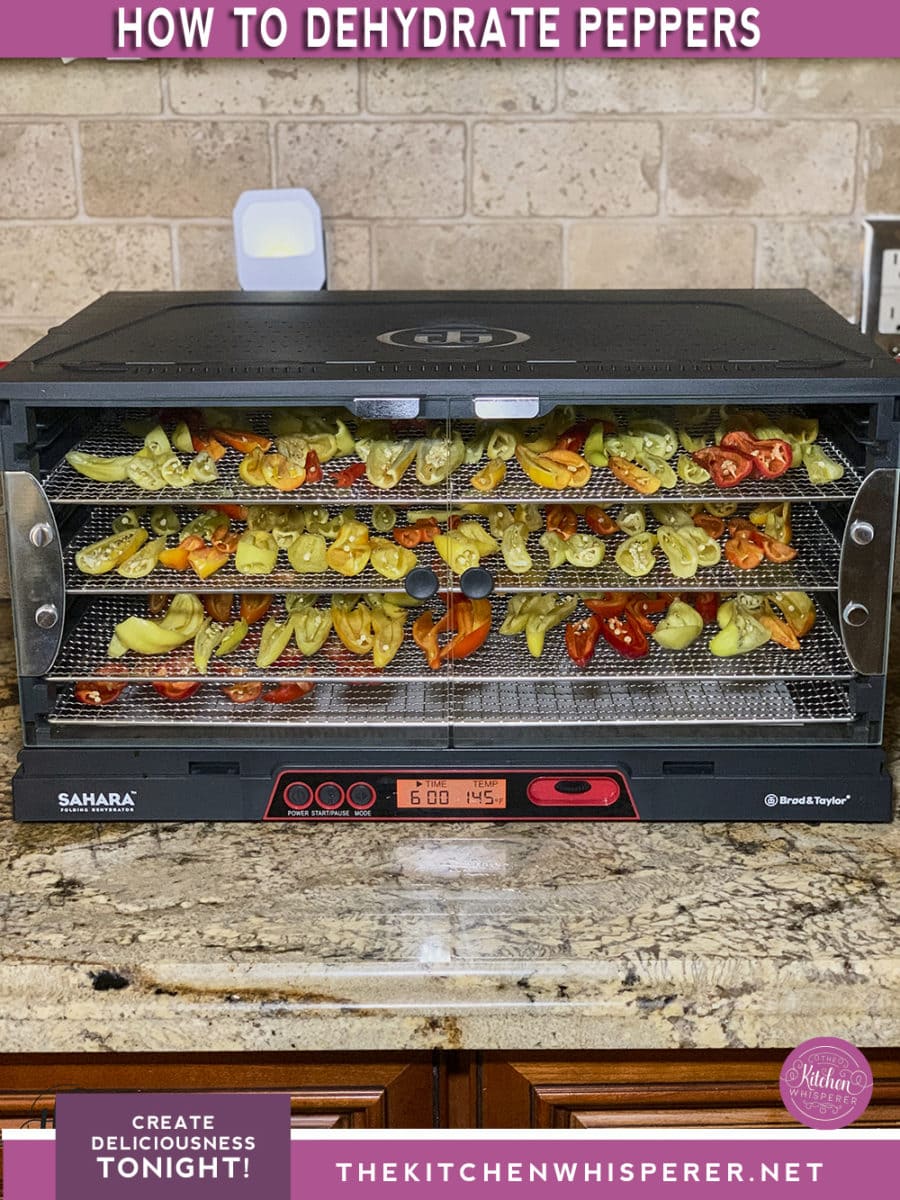
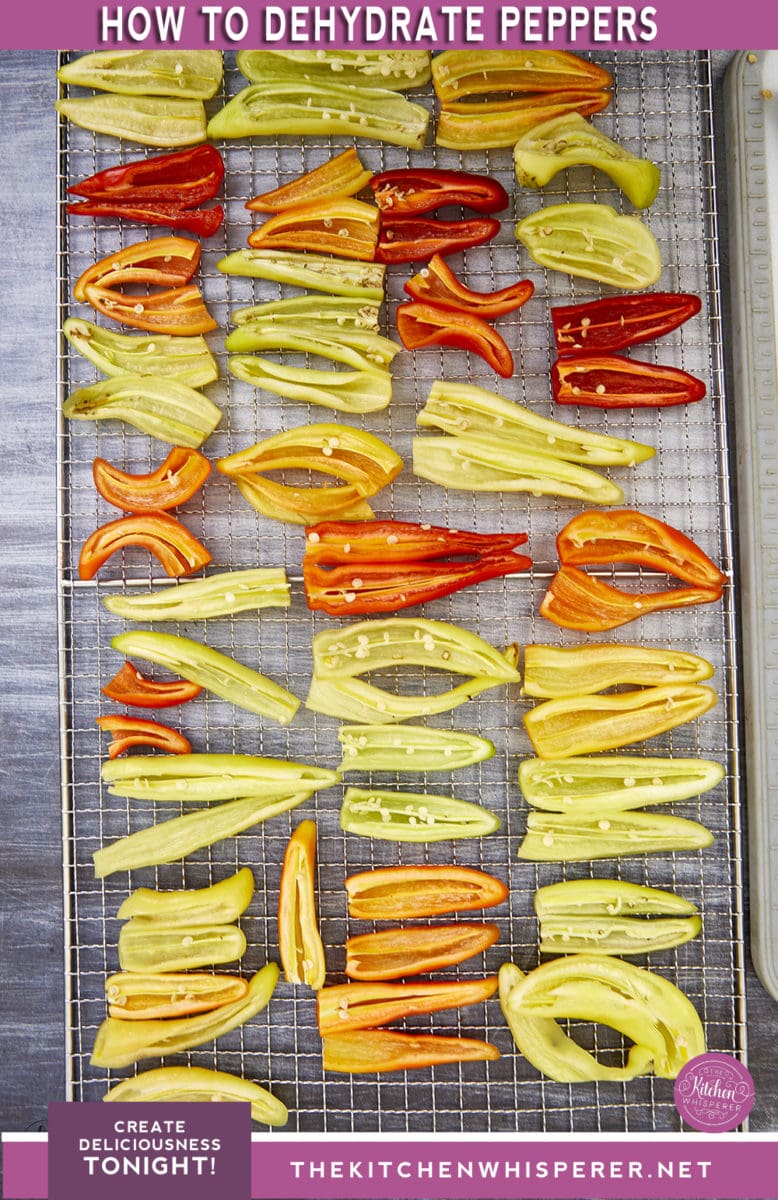
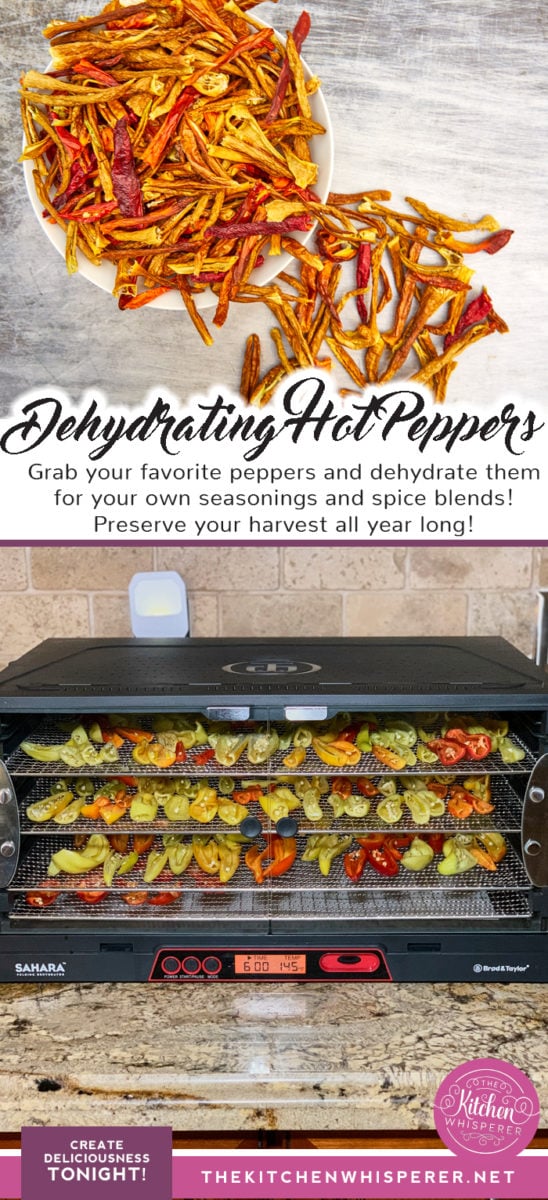
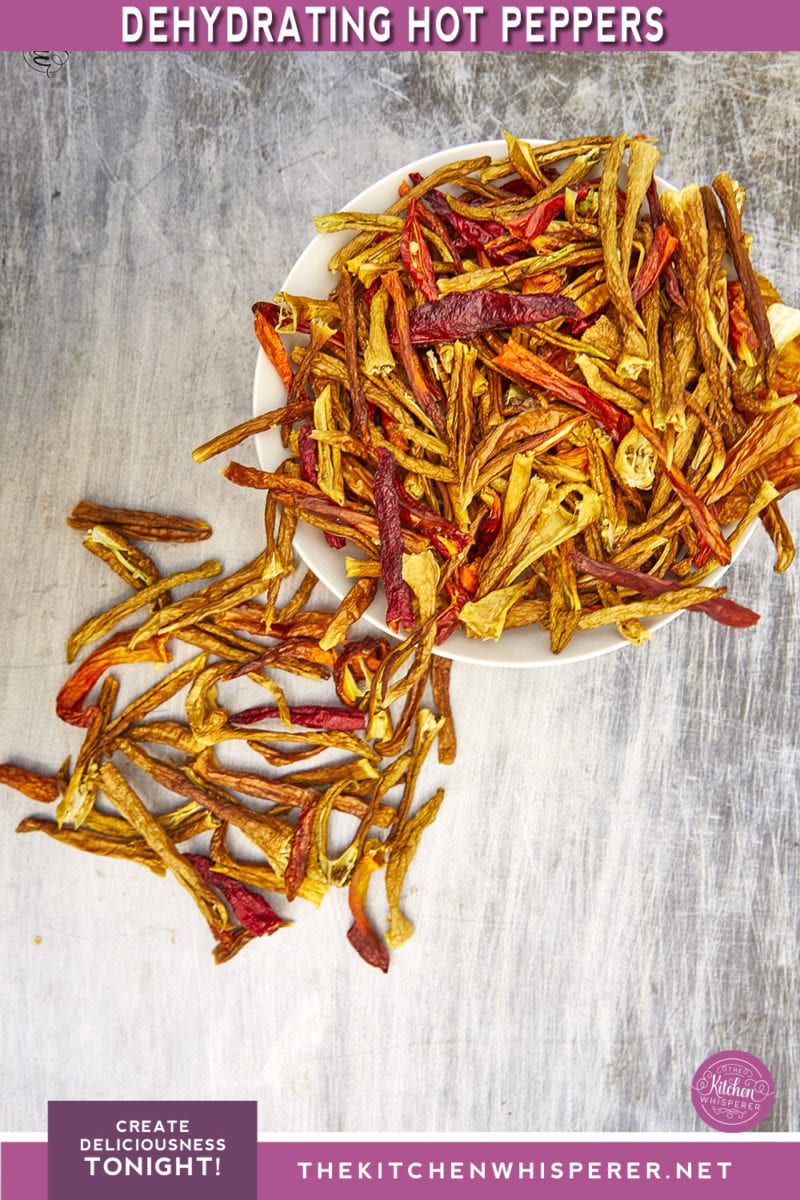







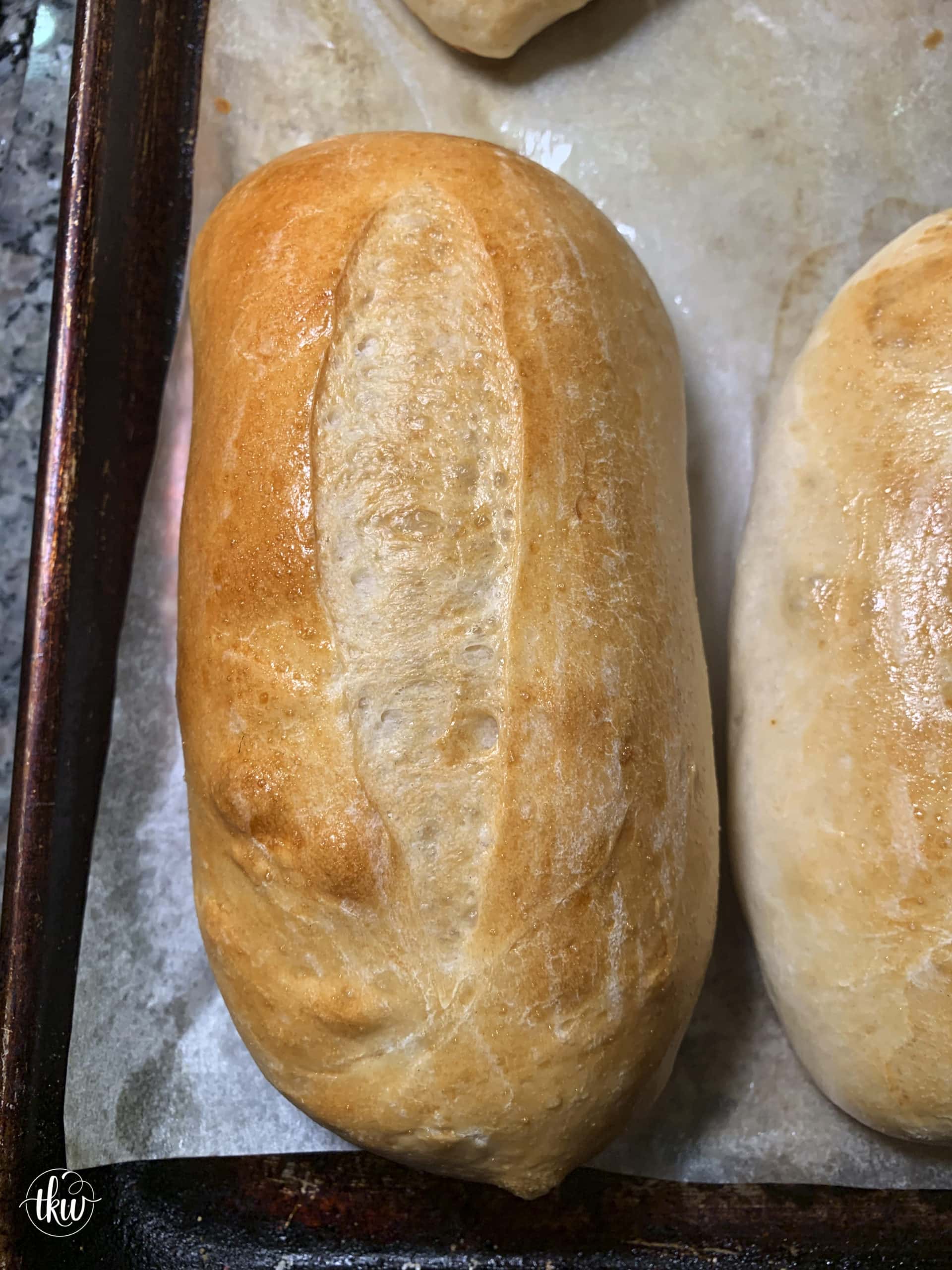
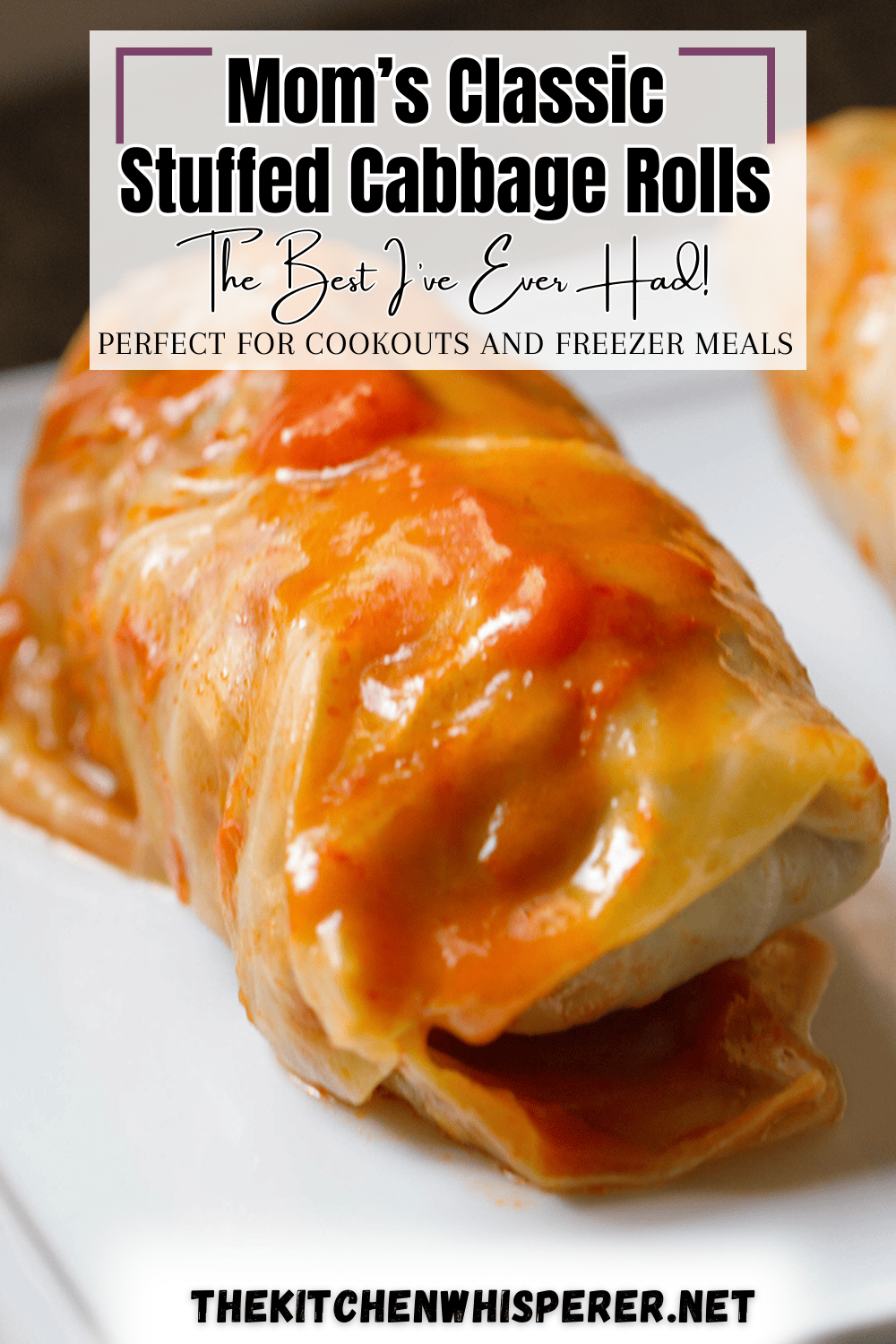
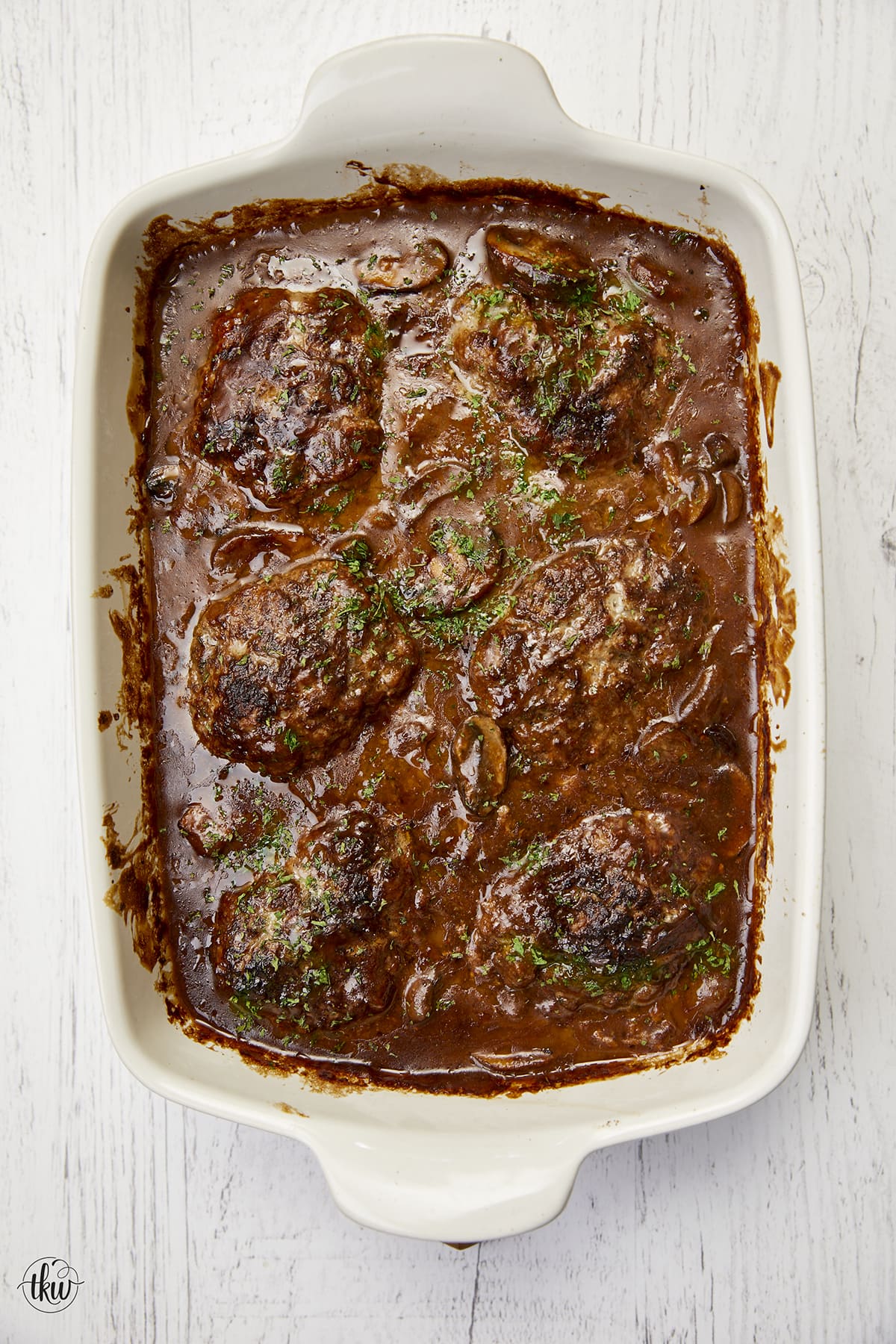



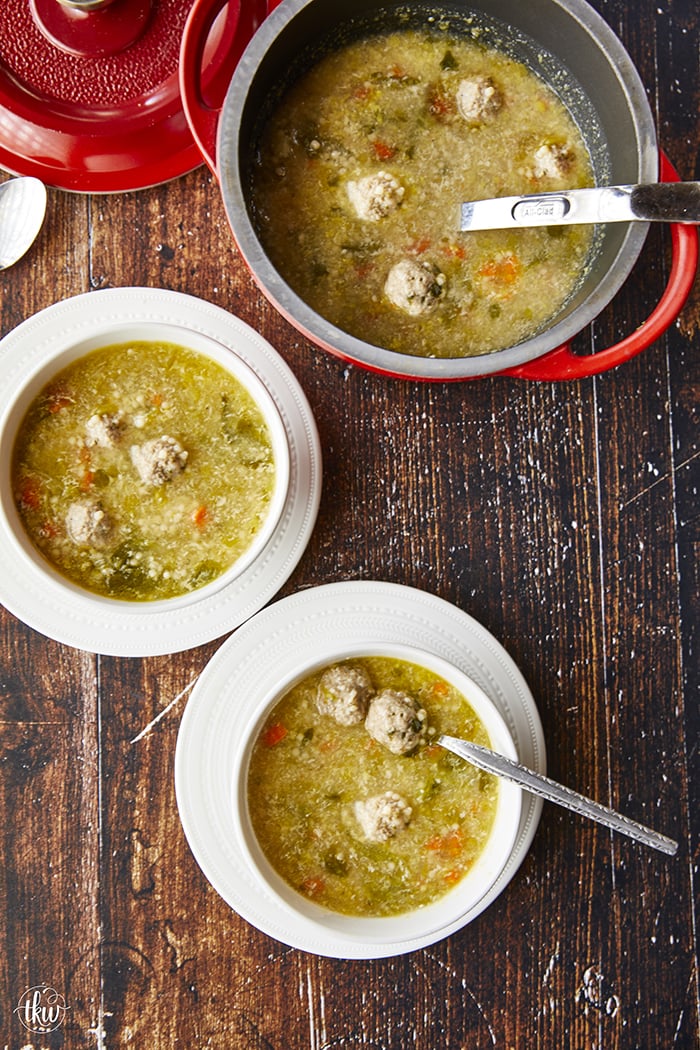

Leave a Reply